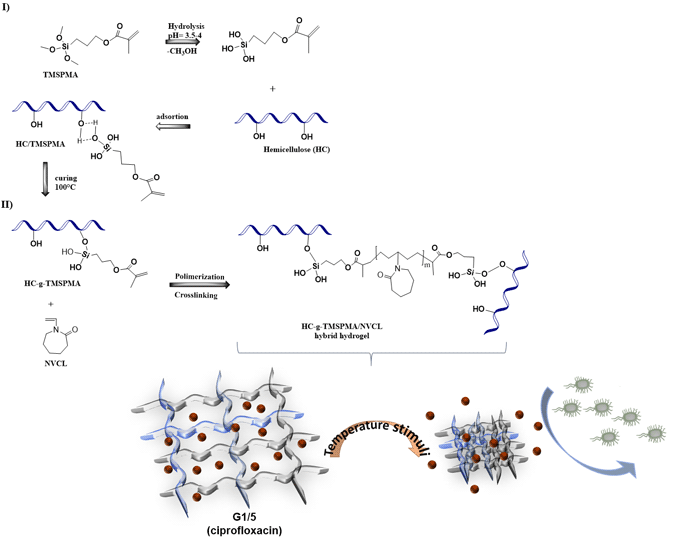Crossref Citations
This article has been cited by the following publications. This list is generated based on data provided by
Crossref.
Imlimthan, Surachet
Figueiredo, Patrícia
Santos, Hélder A.
and
Sarparanta, Mirkka
2021.
Lignin-Based Materials for Biomedical Applications.
p.
1.
Qaseem, Mirza Faisal
Shaheen, Humaira
and
Wu, Ai-Min
2021.
Cell wall hemicellulose for sustainable industrial utilization.
Renewable and Sustainable Energy Reviews,
Vol. 144,
Issue. ,
p.
110996.
Lobo, Flávia C. M.
Franco, Albina R.
Fernandes, Emanuel M.
and
Reis, Rui L.
2021.
An Overview of the Antimicrobial Properties of Lignocellulosic Materials.
Molecules,
Vol. 26,
Issue. 6,
p.
1749.
Makvandi, Pooyan
Iftekhar, Sidra
Pizzetti, Fabio
Zarepour, Atefeh
Zare, Ehsan Nazarzadeh
Ashrafizadeh, Milad
Agarwal, Tarun
Padil, Vinod V. T.
Mohammadinejad, Reza
Sillanpaa, Mika
Maiti, Tapas Kumar
Perale, Giuseppe
Zarrabi, Ali
and
Rossi, Filippo
2021.
Functionalization of polymers and nanomaterials for water treatment, food packaging, textile and biomedical applications: a review.
Environmental Chemistry Letters,
Vol. 19,
Issue. 1,
p.
583.
Melati, Ranieri Bueno
de Freitas, Caroline
and
Brienzo, Michel
2022.
Hemicellulose Biorefinery: A Sustainable Solution for Value Addition to Bio-Based Products and Bioenergy.
p.
139.
Ge, Hanjing
2022.
Mechanism and influencing factors of bacterial cellulose synthesis based on Minitab.
Journal of Computational Methods in Sciences and Engineering,
Vol. 22,
Issue. 4,
p.
1333.
Ilyas, R.A.
Sapuan, S.M.
Ibrahim, M.S.
Wondi, M.H.
Norrrahim, M.N.F.
Harussani, M.M.
Aisyah, H.A.
Jenol, M.A.
Nahrul Hayawin, Z.
Atikah, M.S.N.
Ibrahim, R.
SaifulAzry, S.O.A.
Hassan, C.S.
and
Haris, N.I.N.
2022.
Oil Palm Biomass for Composite Panels.
p.
3.
Gonzalez-Urias, Alejandra
Licea-Claverie, Angel
Sañudo-Barajas, J. Adriana
and
González-Ayón, Mirian A.
2022.
NVCL-Based Hydrogels and Composites for Biomedical Applications: Progress in the Last Ten Years.
International Journal of Molecular Sciences,
Vol. 23,
Issue. 9,
p.
4722.
Zhang, Xueqin
Guo, Haoqi
Xiao, Naiyu
Ma, Xinye
Liu, Chuanfu
Zhong, Le
and
Xiao, Gengsheng
2022.
Preparation and properties of epichlorohydrin-cross-linked chitosan/hydroxyethyl cellulose based CuO nanocomposite films.
Cellulose,
Vol. 29,
Issue. 8,
p.
4413.
Yuan, Yingmin
Zhang, Baolian
Zhao, Hongbin
Liao, Xiaolan
and
Xu, Huiqiao
2024.
Preparation and performance of poly(AM/NVCL) temperature-sensitive composite hydrogels enhanced by laponite.
Iranian Polymer Journal,
Vol. 33,
Issue. 4,
p.
555.
Solihat, Nissa Nurfajrin
Hidayat, Alif Faturahman
Ilyas, R.A.
Thiagamani, Senthil Muthu Kumar
Azeele, Nur Izyan Wan
Sari, Fahriya Puspita
Ismayati, Maya
Bakshi, Mohammad Irfan
Garba, Zaharaddeen N.
Hussin, M. Hazwan
Restu, Witta Kartika
Syafii, Wasrin
Ariyanta, Harits Atika
and
Fatriasari, Widya
2024.
Recent antibacterial agents from biomass derivatives: Characteristics and applications.
Journal of Bioresources and Bioproducts,
Li, Yanni
Han, Yujia
Li, Hongxia
Niu, Xiaohui
Zhang, Deyi
and
Wang, Kunjie
2024.
Antimicrobial Hydrogels: Potential Materials for Medical Application.
Small,
Vol. 20,
Issue. 5,






